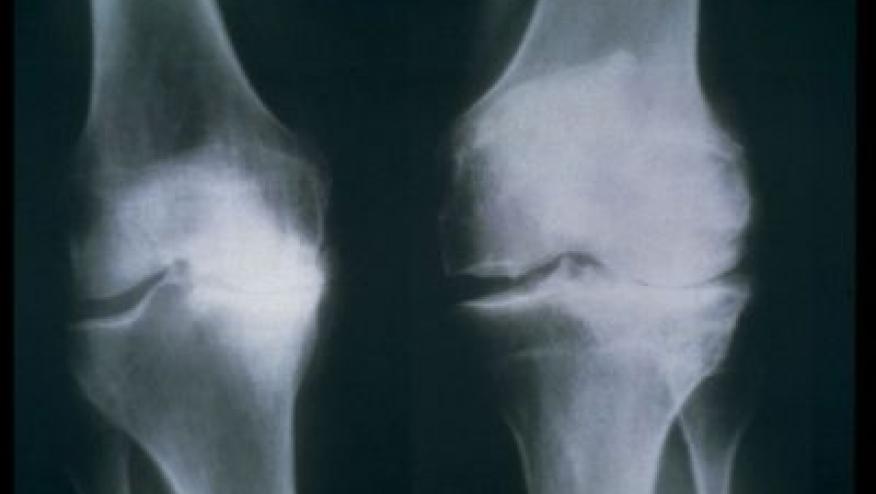CRTAC1- a Novel Biomarker for Osteoarthritis Save

Scientists at deCODE genetics a subsidiary of Amgen report in Arthritis & Rheumatology that a novel plasma protein (cartilage acidic protein-1; CRTAC1) is a potential biomarker of osteoarthritis (OA) through its association with OA risk and progression to joint replacement.
The level of cartilage acidic protein-1 (CRTAC1) in plasma was recently associated with osteoarthritis (OA) risk and progression to joint replacements in Iceland. This study was undertaken to validate these findings in an independent population, using a UK biobank.
The results show that CRTAC1 associates with both prevalent and incident knee and hip OA, and predicts progression to joint replacements in this populations. Of the 1462 proteins measured in plasma from over 54,000 individuals CRTAC1 is the strongest predictor of OA.
- Knee OA (OR 1.34 [CI 1.27-1.41])
- Jip OA (OR 1.19 [CI 1.11-1.28]).
- Progression to joint replacement (HR knee 1.20 [CI 1.08-1.33], HR hip 1.22 [CI 1.08-1.38])
- No association was found with inflammatory joint diseases.
Individuals in the highest quintile of risk based on CRTAC1, age, sex, and BMI, have a tenfold risk of knee or hip OA within 5 years of those in the lowest quintile. Importantly, as in Iceland, no association was found with inflammatory joint diseases, thus making CRTAC1 a specific biomarker of OA.
The lack of a biomarker of osteoarthritis (OA) has hindered the development of effective therapies for this common disease. No measures are presently available for early diagnosis of OA before destructive changes are observable on radiographs, and no disease-modifying drugs are marketed for OA. This biomarker that is associated with disease occurrence and/or progression may help to identify those at risk for the disease earlier and monitor the disease course.








If you are a health practitioner, you may Login/Register to comment.
Due to the nature of these comment forums, only health practitioners are allowed to comment at this time.